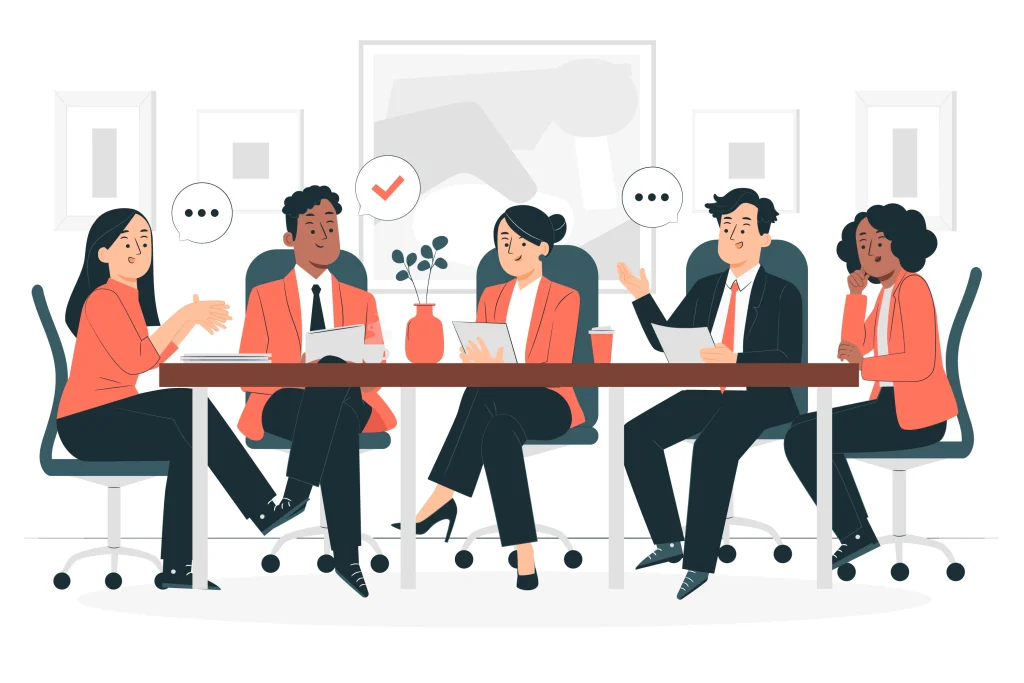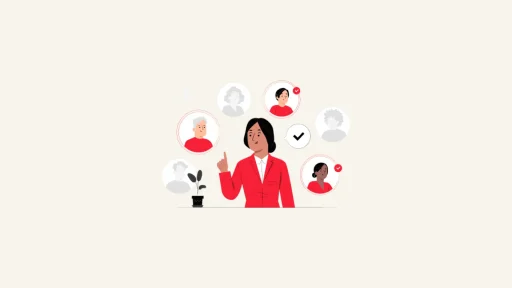
Navigating the complex landscape of team dynamics requires a strategic and proactive approach to conflict resolution. In any collaborative environment, conflicts are bound to arise due to differing perspectives, communication breakdowns, or diverse working styles. Recognizing the inevitability of conflicts, teams can proactively implement rules to guide them through these challenges, fostering open communication, understanding, and collective problem-solving. In this comprehensive guide, we will explore ten essential rules for resolving conflicts in a team, aiming to address immediate concerns and build a foundation for sustained teamwork, growth, and success.
Open Communication
Open communication involves a team’s free ideas, opinions, and feedback flow. It creates an atmosphere where team members can voice their perspectives, contributing to a more inclusive decision-making process. When conflicts arise, this openness becomes paramount in addressing issues promptly and effectively.
The Importance of Open Communication in Conflict Resolution:
- Trust Building:
Open communication builds trust among team members. When individuals feel heard and understood, trust is established, creating a conducive environment for conflict resolution. - Early Detection of Issues:
An environment of open communication facilitates the early detection of issues. Team members are more likely to share concerns as they arise, preventing conflicts from escalating into more significant problems. - Increased Understanding:
Through open communication, team members gain a deeper understanding of each other’s perspectives. This understanding lays the groundwork for constructive dialogue, making finding common ground during conflicts easier. - Enhanced Problem-Solving:
Teams that communicate openly are better equipped to engage in collaborative problem-solving. When conflicts arise, the collective intelligence of the team can be harnessed to find innovative and mutually beneficial solutions.
Open communication is not just a facet of effective teamwork; the linchpin holds the team together through challenges and conflicts. Encouraging open communication establishes trust, allows for the early detection of issues, promotes understanding, and enhances the team’s problem-solving capabilities. As teams embrace open communication, they pave the way for a more resilient and harmonious work environment, ensuring that conflicts are not roadblocks but stepping stones toward growth and success.

Active Listening
Effective communication within a team involves more than just speaking; it requires active listening — a skill often underestimated but crucial for successful conflict resolution. In team dynamics, active listening becomes a powerful tool for understanding diverse perspectives, building empathy, and navigating conflicts. This section explores the significance of active listening in team conflicts and how it contributes to creating a collaborative and understanding work environment.
The Role of Active Listening in Conflict Resolution:
- Building Empathy:
Active listening fosters empathy by allowing team members to truly comprehend the emotions and concerns behind each other’s words. This emotional connection forms the basis for effective conflict resolution. - Clarifying Misunderstandings:
Misunderstandings often fuel conflicts. Active listening helps in clarifying misinterpretations and ensuring that all team members are on the same page, minimizing the potential for conflicts to escalate. - Demonstrating Respect:
When team members actively listen to each other, they demonstrate respect for one another’s opinions. This respectful exchange forms the foundation for a collaborative team culture where conflicts can be addressed with mutual understanding. - Encouraging Open Dialogue:
Active listening encourages open dialogue by creating an environment where team members feel valued and heard. This, in turn, promotes a culture of open communication that is essential for resolving conflicts effectively.
Active listening is a linchpin in conflict resolution within a team. By building empathy, clarifying misunderstandings, demonstrating respect, and encouraging open dialogue, active listening transforms conflicts into opportunities for understanding and growth. As teams cultivate the skill of active listening, they lay the groundwork for a harmonious work environment where conflicts are navigated with empathy and resolved with a shared commitment to collaboration.

Define Clear Expectations
Setting clear expectations serves as a compass, guiding each team member toward a shared goal. Ambiguity in roles, responsibilities, and objectives can breed conflicts within a team. This section delves into the pivotal role of defining clear expectations in preventing conflicts and promoting a harmonious collaborative environment.
Clear expectations provide a roadmap for team members, ensuring that everyone is on the same page regarding their roles and contributions. When each member understands their responsibilities and the overall team objectives, the likelihood of misunderstandings and conflicts diminishes, allowing the team to function seamlessly.
The Significance of Clear Expectations in Conflict Prevention:
- Role Clarity:
Clearly defined expectations eliminate confusion regarding individual roles. Team members are better equipped to understand their specific contributions, reducing the chances of conflicts arising from overlapping responsibilities or misunderstandings. - Aligned Objectives:
When expectations regarding team goals are explicit, team members can align their efforts toward a common purpose. This shared understanding fosters unity, minimizing the potential for conflicts arising from divergent priorities. - Accountability:
Clear expectations establish a foundation for accountability. Team members are more likely to take ownership of their tasks when expectations are transparent, reducing the likelihood of conflicts stemming from missed deadlines or incomplete deliverables. - Effective Communication:
Defined expectations facilitate effective communication. When everyone is aware of what is expected of them, communication becomes streamlined, reducing the risk of misunderstandings that can escalate into conflicts.
Defining clear expectations is not merely a procedural formality but a proactive strategy for conflict prevention within a team. Role clarity, aligned objectives, accountability, and effective communication are the pillars of conflict-free collaboration. As teams embrace the practice of setting clear expectations, they lay the groundwork for a cohesive and productive work environment, where conflicts are minimized and collective efforts are directed towards shared success.

Set Ground Rules
Just as a well-constructed building relies on a solid foundation, successful teamwork requires a framework to guide interactions and behaviors. Setting ground rules is the cornerstone of building a resilient, collaborative team culture. This section explores the importance of establishing clear ground rules and how they contribute to a positive work environment by preventing conflicts and fostering effective collaboration.
Ground rules provide a structure for team interactions, helping to define acceptable behavior, expectations, and conflict resolution mechanisms. By establishing these rules upfront, teams create a shared understanding that lays the groundwork for a harmonious and productive working relationship.
The Role of Ground Rules in Shaping Team Dynamics:
- Behavioral Expectations:
Ground rules outline acceptable behavior within the team. Whether it’s fostering respect, promoting inclusivity, or encouraging open communication, these rules set the standards for how team members interact with each other. - Conflict Resolution Procedures:
Clear ground rules include procedures for addressing conflicts. When disagreements arise, having predefined steps for resolution helps teams navigate challenges more efficiently, reducing the likelihood of conflicts escalating. - Promoting Accountability:
Ground rules promote accountability by outlining responsibilities and expectations. Team members are more likely to adhere to their commitments when they understand the agreed-upon rules, minimizing the potential for conflicts arising from unmet expectations. - Creating a Positive Team Culture:
Establishing ground rules contributes to the creation of a positive team culture. When expectations are clear, and everyone understands how to work together, it fosters a collaborative environment where conflicts are less likely to emerge.
Setting ground rules is a proactive approach to shaping a team’s dynamics. By defining behavioral expectations, conflict resolution procedures, and promoting accountability, ground rules provide the scaffolding for a positive team culture. Teams that embrace and uphold these rules create an environment where conflicts are addressed efficiently, allowing the collective energy to be directed toward achieving shared goals. As teams establish and adhere to ground rules, they lay the foundation for a cohesive, resilient, high-performing unit.

Address Issues Early
Addressing issues promptly is akin to tending to a garden in its early stages—nipping the weeds in the bud to ensure a flourishing and vibrant environment. This section delves into the critical importance of addressing issues early within a team, examining how timely intervention can prevent minor concerns from blossoming into full-fledged conflicts, ultimately fostering a culture of open communication and collaboration.
Proactive problem-solving is an essential component of effective team management. When teams address issues early, they not only prevent potential conflicts but also cultivate an atmosphere of transparency, trust, and mutual respect among team members.
The Crucial Role of Timely Issue Resolution:
- Preventing Escalation:
Addressing issues early prevents minor concerns from escalating into major conflicts. Tackling problems at their inception allows teams to resolve issues swiftly, maintaining a positive team atmosphere. - Fostering Open Communication:
Early issue resolution encourages open communication. Team members are more likely to voice their concerns when they know that the team values and addresses problems promptly, leading to a culture of transparency. - Preserving Team Morale:
Timely problem-solving preserves team morale. When issues are addressed early, team members feel supported and valued, preventing negative sentiments from festering and affecting the overall team dynamic. - Enhancing Productivity:
Proactive issue resolution contributes to enhanced productivity. By eliminating roadblocks early on, teams can stay focused on their goals and objectives, ensuring that energy is directed towards constructive endeavors rather than resolving conflicts.
Addressing issues early is not merely a reactive measure but a strategic approach to cultivating a healthy and thriving team environment. By preventing the escalation of problems, fostering open communication, preserving team morale, and enhancing productivity, teams lay the groundwork for sustained success. As teams embrace the practice of early issue resolution, they create a culture where challenges are met head-on, conflicts are averted, and the collective energy is channeled toward achieving shared goals.

Neutral Mediation
Conflicts can sometimes reach an impasse, at which point a neutral third party becomes the beacon guiding the team out of stormy waters. Neutral mediation emerges as a crucial element in conflict resolution, offering an unbiased perspective and structured assistance to help teams navigate disputes. This section explores the significance of neutral mediation, examining how it can serve as a strategic compass for teams seeking resolution and reconciliation.
Neutral mediation involves bringing in an impartial facilitator to guide the resolution process. This neutral figure provides a fresh viewpoint, fostering open communication and assisting the team in finding common ground, ultimately restoring equilibrium within the team.
The Strategic Value of Neutral Mediation in Conflict Resolution:
- Impartial Perspective:
A neutral mediator brings an impartial perspective to the conflict resolution process. This lack of bias allows them to assess the situation objectively, facilitating a fair and balanced resolution that considers the interests of all parties involved. - Facilitating Communication:
Mediators excel in facilitating communication. Their role is to create a structured environment where team members can express their concerns, ensuring that all voices are heard and guiding the conversation towards a constructive resolution. - Structuring the Resolution Process:
Neutral mediation introduces a structured approach to conflict resolution. Mediators often employ established techniques to identify root causes, explore potential solutions, and guide the team toward consensus, providing a roadmap for resolution. - Preserving Relationships:
Teams can preserve relationships by addressing conflicts through neutral mediation. The impartial mediator focuses on the issues at hand, helping teams find common ground without escalating personal tensions and fostering an environment conducive to future collaboration.
Neutral mediation is not a sign of weakness within a team but a strategic decision to seek resolution through an unbiased lens. By providing an impartial perspective, facilitating communication, structuring the resolution process, and preserving relationships, neutral mediation is a valuable compass for teams navigating through conflicts. As teams embrace this approach, they harness the expertise of a neutral third party to guide them toward reconciliation, ensuring that the team emerges stronger, more cohesive, and ready to face future challenges together.

Focus on the Issue, Not the Person
Conflicts are inevitable in the intricate dance of team collaboration. However, how these conflicts are approached can make all the difference in team dynamics. “Focus on the issue, not the person” is a guiding principle for constructive conflict resolution, emphasizing the importance of addressing problems rather than assigning blame. This section delves into the significance of this approach, exploring how it fosters a positive team environment and contributes to long-term cohesion.
Conflicts often arise from differences in opinions, working styles, or task approaches. When teams prioritize addressing the root cause of the conflict rather than pointing fingers, they create a more understanding and solution-oriented environment.
The Crucial Role of Issue-Centric Conflict Resolution:
- Promoting Solution-Oriented Discussions:
Focusing on the issue promotes solution-oriented discussions. Team members are encouraged to collaboratively find resolutions rather than dwelling on personal differences, leading to more effective conflict resolution. - Maintaining Respectful Communication:
Team members can maintain respectful communication by centering discussions on the issue at hand. Avoiding personal attacks ensures that conflicts are approached professionally, preserving team relationships. - Preventing Escalation of Tensions:
Addressing the issue, not the person, helps prevent tensions from escalating. When individuals feel attacked, conflicts can intensify; however, focusing on the problem encourages a more measured and collaborative approach. - Fostering a Positive Team Culture:
The principle of focusing on the issue contributes to fostering a positive team culture. When team members understand that conflicts are addressed constructively, it creates an environment where open communication and problem-solving are valued.
“Focus on the issue, not the person” is a mantra that guides teams toward constructive conflict resolution. By promoting solution-oriented discussions, maintaining respectful communication, preventing the escalation of tensions, and fostering a positive team culture, this principle becomes a cornerstone for long-term team cohesion. As teams embrace this approach, they lay the foundation for an environment where conflicts are seen as opportunities for growth, collaboration thrives, and the team’s collective strength is harnessed to overcome challenges.

Collaborative Problem Solving
Conflicts often arise as natural byproducts of diverse perspectives and working styles in the tapestry of team dynamics. However, these conflicts can be transformed into catalysts for growth through the power of collaborative problem-solving. This section delves into the significance of collaborative problem-solving as a key strategy for resolving conflicts within a team, exploring how it fosters synergy, encourages innovative thinking, and strengthens the bonds among team members.
Collaborative problem-solving involves harnessing the collective intelligence and skills of the team to address challenges and conflicts. By bringing diverse perspectives together, teams can navigate complex issues, turning conflicts into opportunities for creative solutions.
The Transformative Power of Collaborative Problem-Solving:
- Utilizing Diverse Perspectives:
Collaborative problem-solving leverages the diverse perspectives within the team. By considering a variety of viewpoints, teams can uncover innovative solutions that might not be apparent through individual problem-solving. - Fostering a Culture of Unity:
When teams engage in collaborative problem-solving, it fosters a culture of unity. Team members feel a sense of shared responsibility for finding solutions, promoting a collaborative spirit that extends beyond conflict resolution. - Encouraging Open Communication:
Collaborative problem-solving encourages open communication. Team members are more likely to express their ideas and concerns in a supportive environment, facilitating a more transparent and constructive approach to conflict resolution. - Building Team Cohesion:
The process of working together to solve problems builds team cohesion. Shared problem-solving experiences create a bond among team members, fostering a sense of camaraderie that can withstand future challenges.
Collaborative problem-solving is not just a conflict resolution strategy; it is a mindset that transforms conflicts into opportunities for team growth. Collaborative problem-solving becomes a powerful tool in the team’s arsenal by utilizing diverse perspectives, fostering a culture of unity, encouraging open communication, and building team cohesion. As teams embrace this approach, conflicts become stepping stones to innovation, and the team’s collective strength is harnessed to overcome challenges, leading to a more resilient, cohesive, and high-performing unit.

Learn from Conflicts
Conflicts often stand as unavoidable hurdles in the intricate tapestry of team dynamics. However, rather than viewing conflicts as obstacles, teams can transform them into invaluable learning opportunities. This section explores learning from conflicts, emphasizing how a reflective approach can lead to enhanced understanding, improved collaboration, and overall team resilience.
Conflict is inherent in any team, arising from different perspectives, priorities, and working styles. The key lies in avoiding conflicts and leveraging them as stepping stones for continuous improvement and team development.
The Transformative Process of Learning from Conflicts:
- Reflection and Understanding:
Learning from conflicts involves reflection and understanding. Team members are encouraged to analyze the root causes of conflicts, considering the underlying issues and individual perspectives, which fosters a deeper understanding of team dynamics. - Identifying Areas for Improvement:
Conflicts often unveil areas that need improvement. Teams can use conflict situations as diagnostic tools to identify weaknesses in communication, processes, or collaboration, prompting targeted efforts for enhancement. - Enhancing Communication Strategies:
Learning from conflicts prompts teams to enhance their communication strategies. By identifying breakdowns in communication that led to conflicts, teams can implement more effective communication methods, minimizing the risk of similar issues in the future. - Fostering a Culture of Continuous Improvement:
The process of learning from conflicts contributes to fostering a culture of continuous improvement. Teams that actively seek lessons from conflicts demonstrate a commitment to evolving and growing together, building resilience and adaptability.
Learning from conflicts is a strategic approach to transforming challenges into catalysts for team growth. By fostering reflection and understanding, identifying areas for improvement, enhancing communication strategies, and embracing a culture of continuous improvement, teams can turn conflicts into valuable learning experiences. As teams apply these insights, conflicts become opportunities for refinement, strengthening the team’s collective ability to overcome challenges and fostering a culture of resilience and adaptability.

Celebrate Successes
In the dynamic landscape of team collaboration, achievements and successes serve as the building blocks of a thriving and motivated workforce. However, celebrating successes extends beyond mere acknowledgment; it plays a pivotal role in fostering team morale, reinforcing positive behavior, and creating a shared sense of accomplishment. This section explores the importance of celebrating successes within a team, emphasizing how recognition can contribute to a positive team culture and strengthen the bonds among team members.
Celebrating successes is not just about acknowledging individual accomplishments; it’s about recognizing the collective efforts that propel a team toward its goals. By doing so, teams cultivate an environment where achievements are valued, and the shared pursuit of excellence becomes a unifying force.
The Impactful Role of Celebrating Successes:
- Boosting Team Morale:
Celebrating successes provides a powerful boost to team morale. Recognition and acknowledgment create a positive atmosphere, motivating team members to continue putting forth their best efforts. - Reinforcing Positive Behavior:
Recognition of successes reinforces positive behavior within the team. When individuals see that their contributions are valued and celebrated, they are more likely to replicate those behaviors, fostering a culture of excellence. - Creating a Shared Sense of Accomplishment:
Celebrating successes creates a shared sense of accomplishment. Team members feel a collective pride in their achievements, promoting a feeling of unity and a shared commitment to the team’s success. - Building a Positive Team Culture:
The practice of celebrating successes contributes to building a positive team culture. In an environment where achievements are acknowledged and celebrated, team members are more likely to collaborate, support each other, and persevere through challenges.
Celebrating successes is a formality and a strategic practice that nurtures team morale and unity. By boosting team morale, reinforcing positive behavior, creating a shared sense of accomplishment, and building a positive team culture, recognition becomes a cornerstone of team success. As teams actively celebrate their successes, they acknowledge past achievements and lay the foundation for a motivated and resilient team prepared to conquer future challenges.
Conclusion
Conflicts are not roadblocks but milestones that can lead to stronger, more cohesive teams. By embracing these ten important rules for conflict resolution, teams embark on a journey of growth, understanding, and shared success. As they navigate the complexities of interpersonal dynamics, these rules serve as a compass, guiding teams toward a future characterized by resilience, collaboration, and achieving common objectives.
This article was created by the FirstHR team. You can find even more helpful HR tips in the Guides section. In the Template section, we have prepared for you the most popular HR documents that you can download for free. Enjoy!





